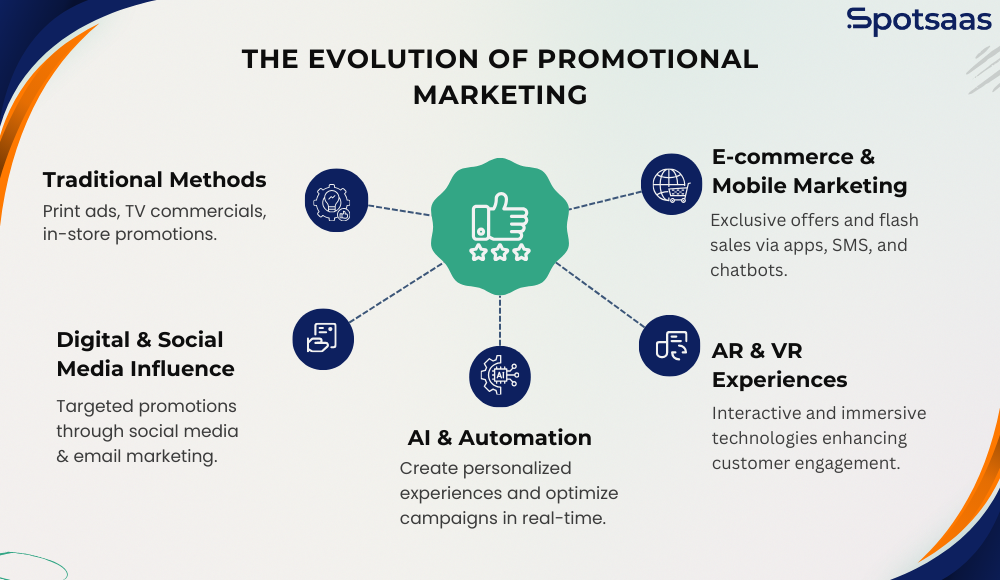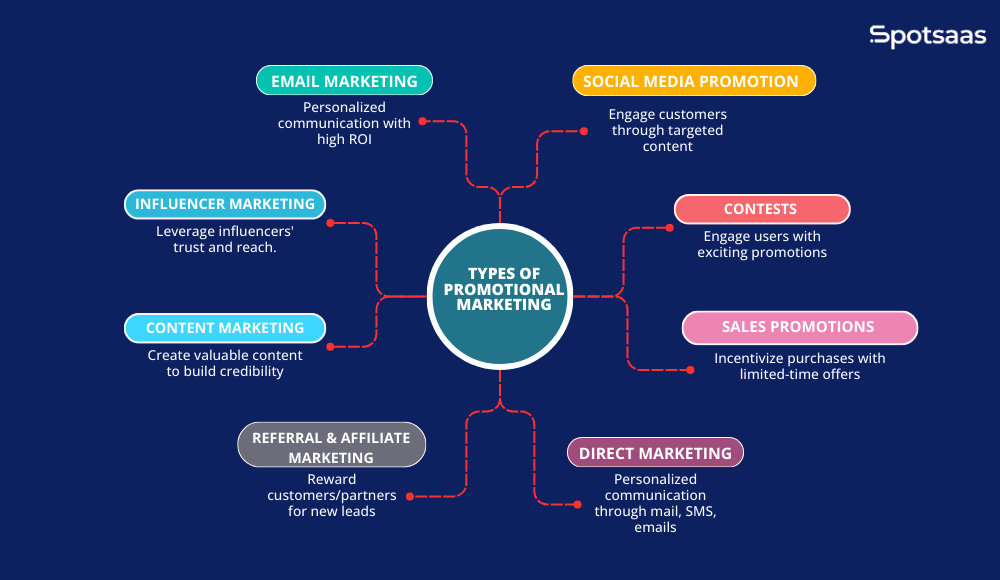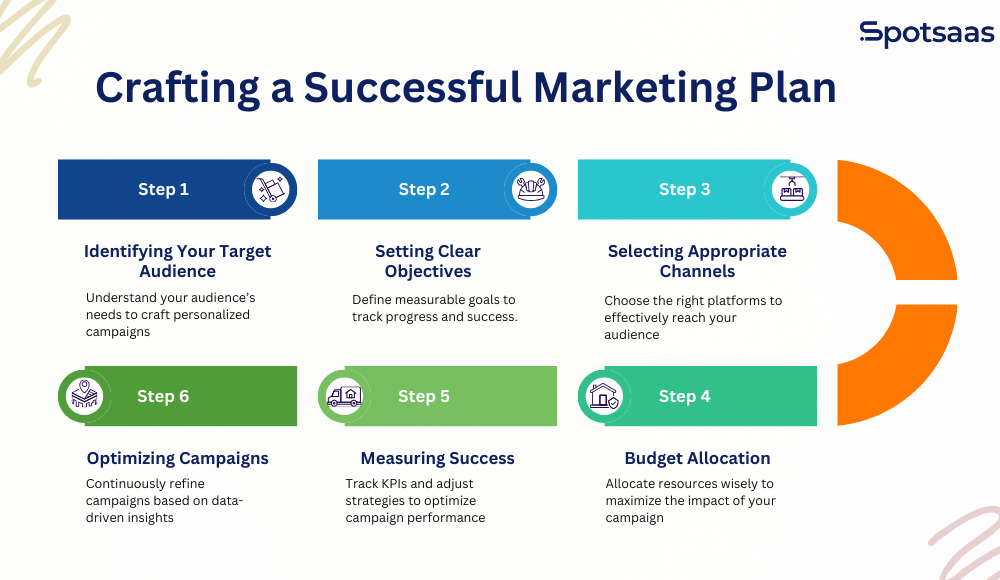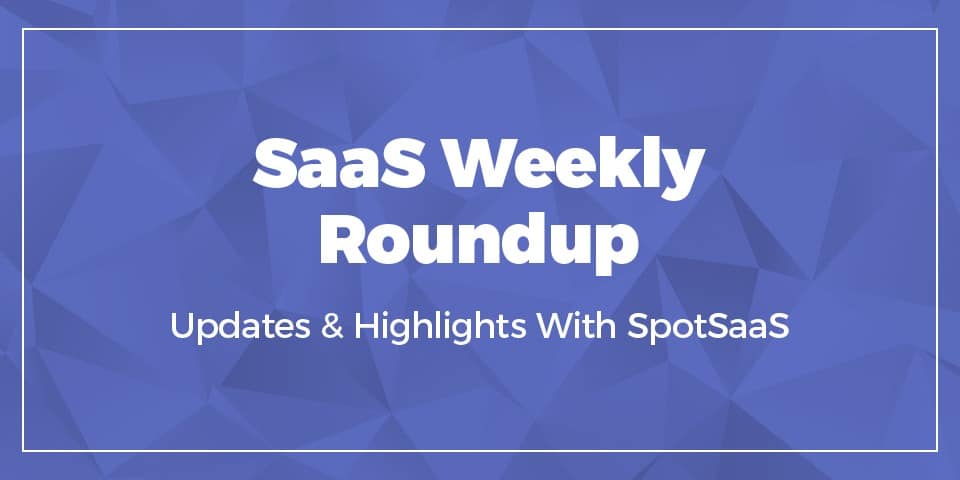Promotional marketing is a strategic approach businesses use to increase brand awareness, drive sales, and build customer engagement through targeted promotional efforts.
This can include discounts, special offers, contests, events, giveaways, and digital campaigns designed to attract and retain customers. It plays a crucial role in shaping consumer perception and influencing purchasing decisions.
Promotional marketing helps businesses gain a competitive edge and fosters customer loyalty by creating memorable experiences and value-driven interactions. Executing effectively can turn casual buyers into long-term brand advocates, driving sustained business growth.
Why is Promotional Marketing Important Today?
In today’s fast-paced and highly competitive business environment, standing out is more challenging than ever. Consumers are bombarded with advertisements from multiple brands, making it essential for businesses to create innovative and engaging marketing campaigns.
Promotional marketing provides a way to cut through the noise by offering value-driven incentives that encourage customer interaction and brand loyalty.
The Evolution of Promotional Strategies with Technology
Promotional marketing has evolved significantly over the years, adapting to technological advancements and changes in consumer behavior.
Traditionally, brands relied on print ads, TV commercials, in-store promotions, and direct mail to reach their audiences. While these methods are still relevant, the rise of digital technology has transformed how businesses engage with consumers.

- Digital & Social Media Influence: Social media platforms, email marketing, and influencer collaborations have become dominant channels for promotional marketing. Brands now use data-driven insights to target specific customer segments with personalized promotions.
- AI & Automation: Artificial intelligence (AI) and marketing automation tools enable businesses to create highly personalized experiences, predict consumer behavior, and optimize real-time campaign performance.
- Augmented Reality (AR) & Virtual Reality (VR): These technologies have introduced interactive and immersive promotional experiences, enhancing customer engagement and brand recall.
- E-commerce & Mobile Marketing: With the surge in online shopping, brands now leverage mobile apps, SMS marketing, and chatbots to offer exclusive discounts and flash sales directly to consumers’ devices.
Incorporating these technological trends into promotional marketing strategies ensures businesses remain competitive and maximize their reach. The following sections will explore key strategies, benefits, and examples of successful promotional marketing campaigns.
Objectives of Promotional Marketing
Promotional marketing is a strategic approach that helps businesses enhance brand visibility, foster customer relationships, and boost sales. Using targeted promotional tactics, companies can attract new customers, increase engagement with their audience, and drive higher conversions.
A well-executed promotional strategy generates immediate results and builds long-term brand loyalty.
Let’s take a deeper look at the core objectives:
1. Building Brand Awareness
Brand awareness refers to how familiar your target audience is with your brand and how easily they recognize it. The higher the brand awareness, the more likely consumers will choose your product or service over competitors. Promotional marketing enhances brand recognition through various creative and strategic efforts:
- Social Media Virality: Engaging content like giveaways, challenges, and collaborations with influencers can go viral, reaching thousands or even millions of potential customers.
- Branded Merchandise & Freebies: Items like t-shirts, mugs, pens, or digital downloads with your logo and slogan help reinforce brand identity.
- Sponsorships & Public Events: Partnering with well-known events, industry expos, or community activities helps associate your brand with positive experiences.
- SEO & Content Marketing: Blogging, video marketing, and other content-driven promotions ensure your brand appears in search results, driving organic visibility.
Building brand awareness is an ongoing process, but once established, it creates trust and credibility, ultimately leading to higher customer retention and market dominance.
2. Increasing Customer Engagement
Customer engagement is all about how actively customers interact with your brand. A brand that keeps its audience engaged builds stronger relationships, leading to long-term loyalty and advocacy. Promotional marketing helps increase engagement through:
- Gamification: Introduce reward-based programs, interactive quizzes, and challenges to encourage participation. For example, a fitness brand could create a “30-Day Workout Challenge” with prizes for participants.
- Personalized Promotions: Sending customized discounts based on purchase history or preferences makes customers feel valued and more likely to engage with your brand.
- User-Generated Content (UGC): Encouraging customers to share their experiences on social media using branded hashtags increases engagement and acts as free marketing.
- Live Webinars & Interactive Q&A Sessions: Hosting live sessions where customers can ask questions, learn about new products, or participate in discussions fosters direct engagement.
Customers actively involved with your brand develop a stronger emotional connection, making them more likely to return and recommend your products or services.
3. Driving Sales and Conversions
The ultimate goal of promotional marketing is to increase sales and drive conversions. Promotional strategies create urgency and incentives that push customers toward making a purchase. Some practical ways to achieve this include:
- Exclusive Time-Sensitive Offers: Limited-time discounts or flash sales encourage impulse purchases by creating a sense of urgency (e.g., “Offer valid for 24 hours only!”).
- Bundling & Cross-Selling: Offering product bundles or discounts on complementary items encourages higher spending per transaction. For example, a beauty brand might offer a “Buy One, Get One 50% Off” deal on skincare products.
- Abandoned Cart Recovery: Sending reminder emails with discounts or free shipping incentives to customers who left items in their cart helps recover lost sales.
- Referral & Loyalty Programs: Rewarding existing customers for bringing in new customers or making repeat purchases strengthens retention and drives new sales.
By strategically implementing promotional tactics, businesses can attract new customers and maximize their revenue potential from existing ones.
Emerging Trends in Promotional Marketing
As technology and consumer behavior evolve, businesses must stay ahead by adopting innovative promotional strategies. Emerging trends in marketing focus on personalization, engagement, and ethical branding to better connect with modern consumers.
AI-driven marketing, voice and visual search optimization, short-form video content, and sustainability initiatives reshape how brands promote themselves. These trends help businesses enhance customer experiences, improve brand visibility, and foster long-term loyalty.
Below is a table outlining these key trends and their impact on promotional marketing:
| Trend | Explanation |
|---|---|
| AI Integration | AI personalizes marketing through chatbots, predictive analytics, and automated content, enhancing engagement and conversions. |
| Voice & Visual Search Optimization | Optimizing for voice assistants and image-based searches improves discoverability and enhances user experience. |
| Short-Form Video Content | Platforms like TikTok, Instagram Reels, and YouTube Shorts drive engagement with quick, attention-grabbing content and brand storytelling. |
| Sustainability & Ethical Marketing | Consumers prefer eco-friendly, transparent, and socially responsible brands, boosting trust and long-term loyalty. |
| Influencer Partnerships | Influencers help brands extend their reach by promoting products authentically to highly engaged audiences. |
| Augmented Reality (AR) Experiences | AR provides interactive and immersive marketing experiences, allowing consumers to engage with products before purchase. |
| Interactive & Personalized Content | Consumers are more likely to engage with personalized and interactive content, leading to better customer experiences. |
| Shoppable Social Media Posts | Social media platforms are integrating e-commerce features, allowing users to shop directly from posts, improving conversion rates. |
Types of Promotional Marketing
There are various approaches businesses use to attract customers and increase engagement. Some focus on direct communication with potential buyers, offering personalized deals and updates. Others leverage digital platforms to enhance visibility, drive interaction, and create brand awareness.
Additionally, strategies involving collaborations and incentives encourage customer participation, fostering long-term loyalty and higher conversion rates.

Email Marketing
Email marketing is a direct and personalized communication channel where businesses send tailored messages to potential customers. It offers high ROI, with every $1 spent generating an average of $44 in return.
Email marketing campaigns can be automated and segmented based on customer preferences, ensuring relevance and increasing engagement. Personalized messages and offers further boost conversion rates, making it an essential tool for businesses looking to nurture leads and retain customers.
Social Media Promotion
Social media promotion utilizes platforms like TikTok, Instagram, Facebook, and LinkedIn to reach a broad audience. Businesses can strengthen customer connections by creating interactive content like polls, stories, and live videos.
Paid ads on these platforms are also highly targeted, helping businesses reach specific demographics, increase brand visibility, and drive website traffic. Social media’s dynamic nature allows real-time customer interaction, building loyalty and brand recognition.
Influencer Marketing
Influencer marketing involves collaborating with individuals who have established trust and a significant following within a niche. These influencers can range from micro-influencers (10K-50K followers) to celebrities. Micro-influencers often generate higher engagement due to their close-knit communities.
This type of marketing allows brands to leverage the credibility and authenticity of influencers to reach new audiences and foster trust. User-generated content, encouraged through influencer partnerships, further boosts brand authenticity and trust.
Content Marketing
Content marketing focuses on producing and distributing valuable content to attract and retain customers. This content can include blogs, videos, podcasts, and infographics. Content marketing enhances brand credibility by providing valuable insights or entertainment.
SEO-optimized content drives organic traffic and improves search engine rankings, leading to greater visibility. Content marketing fosters long-term customer loyalty by positioning a brand as a thought leader in its industry.
Referral & Affiliate Marketing
Referral and affiliate marketing are performance-based strategies where customers or partners are rewarded for bringing in new clients. Referral marketing encourages existing customers to recommend the brand to friends and family, usually in exchange for discounts, gifts, or other incentives.
On the other hand, affiliate marketing involves partnering with individuals or organizations that promote the brand in exchange for a commission on sales generated. Both cost-effective methods rely on word-of-mouth to build brand awareness and reach new audiences.
Direct Marketing
Direct marketing involves reaching potential customers through direct mail, SMS, or targeted emails. This approach is highly personalized and can be tailored to individual customer preferences.
Remarketing ads are used to re-engage previous visitors who did not complete a purchase, helping to increase conversions. Direct marketing also includes loyalty programs that reward repeat purchases, turning one-time buyers into long-term customers and building a solid customer base.
Sales Promotions & Discounts
Sales promotions and discounts create a sense of urgency and incentivize customers to purchase. Flash sales, limited-time offers, and bundled product discounts are common strategies for encouraging immediate action.
This strategy also employs upselling and cross-selling techniques to maximize revenue per transaction. Promotions can boost short-term sales, clear out excess inventory, and encourage repeat business.
Contests & Giveaways
Contests and giveaways are highly effective for driving engagement and generating excitement around a brand. By hosting social media challenges or offering free products, businesses can engage users and encourage them to share content, increasing brand visibility.
These promotions often result in user-generated content, which can go viral and provide long-term brand recognition. Giveaways help raise brand awareness, attract new followers, and build a loyal community of engaged customers.
Effective Promotional Marketing Strategies
Email Marketing
Personalized email campaigns remain one of the most effective ways to engage customers. Businesses can increase open rates, drive conversions, and nurture long-term relationships by segmenting audiences and tailoring messages based on preferences.
Automated workflows, triggered emails, and personalized offers further enhance engagement and retention.
Social Media Promotion
Leveraging Social Media platforms like TikTok, Instagram, and Facebook allows brands to connect with audiences through interactive content, live videos, and paid ads. Engaging posts, viral challenges, and strategic collaborations can boost brand awareness, increase engagement, and drive traffic to websites or online stores.
Consistent posting, influencer collaborations, and real-time interactions help maintain audience interest.
Influencer Partnerships
Collaborating with influencers helps brands tap into established communities and gain credibility. Influencers create authentic content that resonates with their followers, increasing trust and driving higher conversion rates.
Selecting influencers aligned with brand values ensures genuine endorsements and stronger audience connections.
Content Marketing
Providing valuable and informative content through blogs, videos, podcasts, and infographics helps businesses establish authority in their industry. SEO-optimized content improves search rankings, attracts organic traffic, and fosters long-term customer engagement by offering solutions to their problems.
Storytelling, data-driven insights, and engaging formats make content more shareable and impactful.
Referral and Affiliate Programs
Encouraging existing customers or partners to refer new buyers through incentives like discounts or commissions creates a cost-effective acquisition strategy. Referral programs leverage word-of-mouth marketing, while affiliate partnerships help brands expand their reach with minimal upfront investment, leading to sustainable growth.
A well-structured rewards system motivates participants to promote the brand actively.
Comparison of Promotional Marketing Strategies
This version now includes the content and the table, providing a comprehensive view of the strategies and a quick comparison of their key focuses and benefits.
| Strategy | Key Focus | Benefits |
|---|---|---|
| Email Marketing | Personalized communication | High ROI, strong engagement, customer retention |
| Social Media Promotion | Engaging, visual content | Increased brand visibility, viral potential |
| Influencer Partnerships | Authentic endorsements from influencers | Trusted reach, targeted audience, social proof |
| Content Marketing | Educational and valuable content | Establishes authority, attracts organic traffic |
| Referral & Affiliate Programs | Customer-driven acquisition | Cost-effective, builds trust, scalable growth |
Crafting a Successful Promotional Marketing Plan
A successful promotional marketing plan requires careful planning and strategic execution.
By understanding your audience, setting measurable objectives, selecting the proper channels, managing your budget efficiently, and measuring success, you can ensure that your promotional efforts will deliver impactful results and maximize ROI.
These steps are vital to staying competitive and achieving long-term success.

Identifying Your Target Audience
Understanding your target audience is the cornerstone of any successful marketing campaign. Knowing your audience is tricky; you must understand their needs, behaviors, and preferences.
This knowledge allows you to craft messages and offers that resonate and drive action. To effectively identify your target audience, you should:
- Conduct in-depth market research: Use surveys, focus groups, and data analytics tools to gain insights into consumer behaviors and trends.
- Develop buyer personas: Create detailed profiles of your ideal customers, including demographics, interests, and pain points. This allows you to tailor your messaging more accurately.
- Segment your audience: Divide your audience into different segments based on characteristics like age, location, or buying habits. This segmentation will help you create personalized campaigns that meet each group’s.
Setting Clear Objectives
Setting clear and measurable objectives is critical to crafting a successful marketing plan. Without defined goals, tracking your progress or determining your success is difficult, to set objectives that will drive your campaigns:
- Use SMART goals: Ensure your goals are Specific, Measurable, Achievable, Relevant, and Time-bound. This structure gives you a clear framework to follow and helps you evaluate the success of your campaign.
- Align objectives with business goals: Your marketing objectives should support broader business goals, whether increasing brand awareness, driving traffic, or boosting sales.
- Set short-term and long-term goals: Having both goals will allow you to track progress over time. Short-term goals can include metrics like click-through rates, while long-term goals might focus on customer retention or lifetime value.
Selecting Appropriate Channels
Choosing the proper marketing channels is vital to reaching your target audience in the most effective way possible.
The platforms and methods you select will depend on where your audience spends their time and how they consume content. Here’s to approach channel selection:
- Here’s where your audience is: Determine which platforms your target audience uses most frequently. For example, if you’re targeting millennials, platforms like Instagram, Snapchat, or TikTok are more effective than traditional media.
- Use a multi-channel approach: Don’t rely on a single channel. Utilize a donation of SEO, social media, email marketing, paid ads (PPC), and even traditional channels like print or radio to ensure you reach your audience across multiple touchpoints.
- Focus on engagement, not just reach: It’s just about getting your content in the hands of as many people as possible. Prioritize your channels that allow for meaningful engagement with the iFrame below. Platforms like Instagram and Facebook allow for interaction, building relationships that drive long-term brand loyalty.
Budget Allocation
Efficient budget allocation ensures that your promotional marketing campaign achieves maximum impact without overspending. Properly allocating resources ensures that each part of your campaign gets the attention it deserves. Here are some strategies for allocating your budget:
- Prioritize high-ROI strategies: Analyze past campaigns to identify which channels have provided the highest return on investment. Allocate more budget to the platforms and tactics that have worked best for your business.
- Monitor campaign performance: Use real-time data to monitor how your budget is being spent. If specific channels deliver better results, reallocate resources from underperforming areas to maximize returns.
- Consider scalability: Budget allocation should account for future growth. As your campaign progresses and begins to scale, you may need to adjust your budget to take advantage of new opportunities or increased demand.
- Be flexible: Things don’t always go as planned, so your budget should be flexible. If things aren’t forming as expected, you can adjust and don’t spend time in other, more practical areas.
Efficient budget allocation ensures that your marketing dollars are used wisely, helping you achieve the best possible results while avoiding wasted spend.
Measuring Success
To understand whether your marketing plan works, you must measure your success regularly. Tracking performance and analyzing results is crucial to adjusting and improving future campaigns.
Here’s to measure success:
- Use key performance indicators (KPIs): Track conversion rates, customer engagement, sales growth, and ROI to assess how well your campaign achieves its objectives.
- Leverage analytics tools: Use tools like Google Analytics, HubSpot, and social media insights to track campaign performance in real-time. These tools provide detailed reports that help you understand customer behavior, the effectiveness of different channels, and where improvements are needed.
- Make data-driven adjustments: Based on the data, make changes to your campaigns to optimize performance. For example, adjust the messaging or target audience if an ad isn’t converting as well as expected. If your email open rates are low, reconsider your subject lines or test different send times.
- Evaluate against goals: Regularly compare your performance to the objectives you set at the beginning of the campaign. This ensures that you are on track to meet your goals and allows you to make any necessary tweaks.
By consistently measuring your success, you can make informed decisions that help improve your marketing efforts, increase conversions, and achieve your overall goals.
Optimizing Campaigns
Optimizing campaigns is about refining and adjusting your marketing efforts based on real-time performance data to ensure maximum impact. By continuously evaluating campaign effectiveness, you can make data-driven adjustments that improve results and drive sustained growth. Here are key strategies for optimizing your campaigns:
- Analyze performance data: Use tools like Google Analytics and social media insights to track campaign results and identify what’s working and what’s not.
- Test and tweak: Experiment with different elements, such as ad copy, imagery, and targeting, to see what resonates best with your audience and improves engagement.
- Adjust your strategy: If specific strategies or channels aren’t delivering the expected results, reallocate resources to higher-performing areas.
- Use A/B testing: Implement A/B testing for emails, landing pages, and ads to refine your messaging and creative continually.
Optimizing campaigns ensures that your marketing efforts remain effective, adaptable, and aligned with your business goals, leading to better outcomes.
Conclusion
Promotional marketing is a powerful tool for boosting brand visibility, driving sales, and fostering customer loyalty. By offering targeted incentives such as discounts, giveaways, and digital campaigns, businesses can engage their audience and create memorable experiences.
In today’s competitive environment, leveraging strategies like social media promotion, influencer partnerships, and AI-powered personalization ensures businesses stay relevant and maximize their reach.
A well-executed promotional marketing plan delivers immediate results and supports long-term growth, helping brands build lasting connections with their customers.
Discover more about enhancing your online presence with our guide to the six best website marketing strategies for increasing organic traffic.
Frequently Asked Questions
What is promotional marketing?
Promotional marketing is a strategy businesses use to advertise their products or services and attract more customers.
How do companies promote their products?
Companies promote their products using ads, coupons, samples, contests, social media campaigns, and in-store displays.
Can promotions help increase sales?
Yes, promotions can increase sales by encouraging people to try new products or buy more of something they like.
Do all businesses use promotional marketing?
Most businesses will use some form of promotional marketing at different times to boost interest in what they offer.
Are free samples part of promotional marketing?
Free samples are a popular form of promotional marketing companies use to let customers try before they buy.



